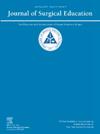神经外科住院医师申请人研究评估:公平竞争环境
IF 2.1
3区 医学
Q1 EDUCATION, SCIENTIFIC DISCIPLINES
引用次数: 0
摘要
背景:神经外科住院医师的竞争非常激烈,申请人越来越强调研究以加强他们的申请。这导致了论文发表量的增加,但也引起了申请者的焦虑和对夸大贡献的担忧。为了确保公平评估,我们开发了一个评分系统,该系统考虑了作者地位和期刊影响因子,以便更准确地评估神经外科应用中的研究贡献。方法采用作者地位和期刊影响因子建立质量调整研究指标。我们对303名住院医师项目申请者的同行评审、pubmed索引出版物进行了分析。收集了人口统计数据,包括性别、医学院排名、IMG状态和高级学位。将被邀请面试者(A组)和未被邀请面试者(B组)的研究指标分数进行比较。受试者工作特征(ROC)曲线分析确定了该指标对访谈邀请的预测准确性。结果A组的研究指标得分(78.2[48.1-133.5]比37.0 [7.8-92.3],p <; 0.01)和论文发表数(10[7-15]比6 [2-12],p <; 0.01)均显著高于b组(23.6% 比23.6% ;15.0%, p = 0.049和23.6%比14.3%,p & lt; 0.01,分别)。男性、在排名靠前的医学院就读、医学博士或博士学位是研究指数得分较高的显著预测因素。临界值≥41.2时,预测面试邀请的敏感性为87%,特异性为53%,AUC为69.7%。结论研究指标客观评价神经外科住院医师学术贡献的质量和意义,强调有意义的研究参与。通过整合期刊影响因素和作者角色,该系统减少了因夸大的出版数量和虚假的研究主张而产生的偏见,促进了申请人评估的透明度和公平性。未来的努力应该集中在自动化这一工具,使其更广泛地适用于医学专业。本文章由计算机程序翻译,如有差异,请以英文原文为准。
Neurosurgery Resident Applicant Research Evaluation: Leveling the Playing Field
Background
Neurosurgery residency is highly competitive, with applicants increasingly emphasizing research to strengthen their applications. This has led to a rise in publications but also to applicant anxiety and concerns about exaggerated contributions. To ensure fair assessment, we developed a scoring system that considers authorship position and journal impact factor for a more precise evaluation of research contributions in neurosurgery applications.
Methods
A quality-adjusted research index was developed using authorship position and journal impact factor. Peer-reviewed, PubMed-indexed publications were analyzed for 303 applicants to our residency program. Demographic data, including sex, medical school ranking, IMG status, and advanced degrees, were collected. Research index scores were compared between applicants invited to interview (Group A) and those not invited (Group B). Receiver operating characteristic (ROC) curve analysis determined the index’s predictive accuracy for interview invitations.
Results
Group A had significantly higher research index scores (78.2 [48.1-133.5] vs. 37.0 [7.8-92.3], p < 0.01) and publication counts (10 [7-15] vs. 6 [2-12], p < 0.01) compared to Group B. First and second authorships were more prevalent among Group A (23.6% vs. 15.0%, p = 0.049 and 23.6% vs. 14.3%, p < 0.01, respectively). Male sex, attendance at highly ranked medical schools, and MD/PhD status were significant predictors of higher research index scores. A cutoff score of ≥41.2 yielded 87% sensitivity and 53% specificity in predicting interview invitations, with an AUC of 69.7%.
Conclusion
The proposed research index objectively evaluates the quality and significance of neurosurgery residency applicants’ scholarly contributions, emphasizing meaningful research engagement. By integrating journal impact factors and authorship roles, the system reduces bias from inflated publication counts and misrepresented research claims, fostering transparency and fairness in applicant evaluation. Future efforts should focus on automating this tool for broader applicability across medical specialties.
求助全文
通过发布文献求助,成功后即可免费获取论文全文。
去求助
来源期刊

Journal of Surgical Education
EDUCATION, SCIENTIFIC DISCIPLINES-SURGERY
CiteScore
5.60
自引率
10.30%
发文量
261
审稿时长
48 days
期刊介绍:
The Journal of Surgical Education (JSE) is dedicated to advancing the field of surgical education through original research. The journal publishes research articles in all surgical disciplines on topics relative to the education of surgical students, residents, and fellows, as well as practicing surgeons. Our readers look to JSE for timely, innovative research findings from the international surgical education community. As the official journal of the Association of Program Directors in Surgery (APDS), JSE publishes the proceedings of the annual APDS meeting held during Surgery Education Week.
 求助内容:
求助内容: 应助结果提醒方式:
应助结果提醒方式:


